Caregiver Conference #3
I attended my third Fearless Caregiver Conference yesterday, and learned once again that:
--I already know a lot about eldercare
--our family is very fortunate to have a team of reliable, caring, round-the-clock caregivers and a complete network of medical professionals and spiritual supporters
I wish more people would take advantage of these helpful caregiver conferences hosted by more than 40 exhibitors and featuring an expert panel discussion and a nice luncheon. (See my post on May 24, 2007 for more details on Fearless Caregiver conferences)
Here is the Caregiver Manifesto, developed by Gary Barg, author and the founder of the Fearless Caregiver Conferences and editor in chief of Today’s Caregiver Magazine:
Caregiver Manifesto----
A Fearless Caregiver:
---Is a caregiver who understands that they have a job to do as a full-time member of their loved ones care team.
---Understands that he or she can make a difference.
---Sees his or her role in their loved one’s care as being just as important as any of the professional caregivers.
---Asks questions of their loved one's doctor and does not rest until they receive clear and concise answers.
---Does not easily take no for an answer.
---Knows their rights concerning his or her loved one’s insurance plan and is able to exercise those rights.
---Knows how to find the latest treatment options and presents qualified research to the members of his or her loved one’s care team.
Friday, February 29, 2008
Thursday, February 21, 2008
Hospice Minister Visits and Calls Regularly

I just received a phone from Rev. Stivers, our hospice team minster. He checks in with me regularly in Miami, to see how I am doing and feeling so far away from my parents.
He visits my parents every three weeks. He brings them so much comfort, especially my Dad who is starved for male companionship. My Dad enjoys challenging him on Bible mysteries.
I am so grateful for his support!
Tuesday, February 19, 2008
Respite Care To The Rescue
I just ordered respite care to provide help while one of our caregivers is on vacation. I requested help from 6PM till midnight for two consecutive evenings. The State of Illinois Department on Aging provides every household with 80 hours of respite care at no charge. Typically, I order the service during the holidays to give a break to our caregivers.
Fortunately, the agency who provides home health care service for us is one of the qualifying respite care agencies. Therefore, they send a caregiver who is already trained to know my parents’ needs and the household set up.
Assisting the 50 million Americans who provide unpaid help to family members, Respite Care has become the most widely requested form of help by caregivers is.
What is Respite Care?
Respite is defined as "an interval of temporary relief or rest." Respite care provides the primary caregiver time away from their care duties to promote well-being for both the caregiver and person with ALS and helps prevent caregiver burnout. It allows the primary caregiver time for rest, an opportunity to participate in social activities and/or to take care of necessary business, so that they can return to caregiving with a renewed sense of well-being.
According to the AARP Family caregivers provide 80% of long-term care in the US, a level of care valued at $350 billion a year, more than what is spent on nursing home and paid home care combined. Even though most families take great joy in providing care to their loved ones so that they can remain at home, the physical, emotional and financial consequences can be overwhelming without some support, such as respite. Respite provides the much needed temporary break from the often exhausting challenges imposed by constant caregiving.
Fortunately, The Lifespan Respite Task Force, a coalition of over 170 national, state, and local organizations, succeeded in signing of The Lifespan Respite Care Act of 2006 (HR 3248) into law. The new law would authorize $289 million over five years for state grants to develop Lifespan Respite Programs to help families access quality, affordable respite care. Lifespan respite programs are defined in the Act "as coordinated systems of accessible, community-based respite care services for family caregivers of children and adults with special needs." Specifically, the law authorizes funds for: development of state and local lifespan respite programs, planned or emergency respite care services, training and recruitment of respite care workers and volunteers, and caregiver training.
Develop a Respite Caregiver Checklist
Before bring a respite worker into your loved one’s home, develop a caregiver checklist that helps guide them on the best care and on how respond in case of emergency.
You may want to include the following categories in your checklist:
--Emergency Contacts
--General Medical Condition Information
--Medication Requirements
--Advanced Directives
--Food and Feeding Preferences
--Medical Equipment in Use
--Household Rules
Good Luck!
Fortunately, the agency who provides home health care service for us is one of the qualifying respite care agencies. Therefore, they send a caregiver who is already trained to know my parents’ needs and the household set up.
Assisting the 50 million Americans who provide unpaid help to family members, Respite Care has become the most widely requested form of help by caregivers is.
What is Respite Care?
Respite is defined as "an interval of temporary relief or rest." Respite care provides the primary caregiver time away from their care duties to promote well-being for both the caregiver and person with ALS and helps prevent caregiver burnout. It allows the primary caregiver time for rest, an opportunity to participate in social activities and/or to take care of necessary business, so that they can return to caregiving with a renewed sense of well-being.
According to the AARP Family caregivers provide 80% of long-term care in the US, a level of care valued at $350 billion a year, more than what is spent on nursing home and paid home care combined. Even though most families take great joy in providing care to their loved ones so that they can remain at home, the physical, emotional and financial consequences can be overwhelming without some support, such as respite. Respite provides the much needed temporary break from the often exhausting challenges imposed by constant caregiving.
Fortunately, The Lifespan Respite Task Force, a coalition of over 170 national, state, and local organizations, succeeded in signing of The Lifespan Respite Care Act of 2006 (HR 3248) into law. The new law would authorize $289 million over five years for state grants to develop Lifespan Respite Programs to help families access quality, affordable respite care. Lifespan respite programs are defined in the Act "as coordinated systems of accessible, community-based respite care services for family caregivers of children and adults with special needs." Specifically, the law authorizes funds for: development of state and local lifespan respite programs, planned or emergency respite care services, training and recruitment of respite care workers and volunteers, and caregiver training.
Develop a Respite Caregiver Checklist
Before bring a respite worker into your loved one’s home, develop a caregiver checklist that helps guide them on the best care and on how respond in case of emergency.
You may want to include the following categories in your checklist:
--Emergency Contacts
--General Medical Condition Information
--Medication Requirements
--Advanced Directives
--Food and Feeding Preferences
--Medical Equipment in Use
--Household Rules
Good Luck!
Thursday, February 14, 2008
Tulsa Massacre Survivor Turns 95 Next Month

see My Dad in this video: http://www.youtube.com/watch?v=vnMLFHXhtbo
My Dad was a survivor of The Tulsa Massacre of 1921, the largest and most brutal incident of violence, destruction, and genocide of a Black community in the history of the United States.
My Dad was only 8 years old when his entire city, Greenwood, was burned to the ground after Blacks were placed in concentration camps while there homes were looted and torched. Importantly, Greenwood, known as the Black Wall Street, was a thriving, self-contained, proud, middle class metropolis with dozens of businesses, movie theaters, newspapers, hospitals, and places of worship. Many Blacks lived in nice homes with chandeliers and baby grand pianos. Segregation prohibited Blacks from doing business and socializing in Tulsa-so they created their own bustling infrastructure in nearby Greenwood.
On May 31, 1921, all that changed when a mob of 10,000 angry armed Whites descended on Greenwood invading homes and businesses and shooting all who resisted. The following day, bombs were dropped from WWI airplanes to complete the devastation leaving more than 10,000 Blacks homeless. Laws were then enacted to prevent them from rebuilding. They all, including my Dad's family, lived in small tents that next winter.
Here is the story:
and
An 8-decade conspiracy of silence convinced all Tulsans-both Black and White-- from speaking of these atrocities until very recently. It was not even mentioned in the Tulsa newspaper the next day.
No one was ever punished for this crime against humanity!
Greenwood NEVER recovered!
This all happended after thousands of Black soldiers had just returned serving in WWI.
The Tulsa-Greenwood Race Riot Claims Accountability Act of 2007 was filed in April 2007.
There are fewer than 50 survivors living including the great Dr. John Hope Franklin.
More videos:
KKK in the 1940s 5 million marched in DC: http://www.youtube.com/watch?v=Tm2nVfkNSeE&NR=1KKK today: http://www.youtube.com/watch?v=GOhUfdL0ifM&NR=1
Subscribe to:
Posts (Atom)

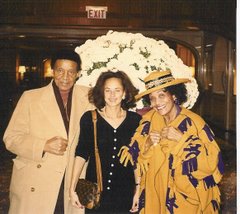
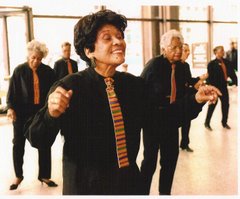
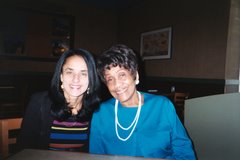
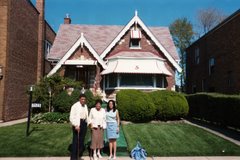
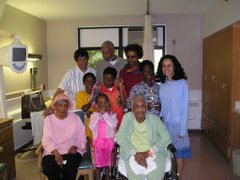

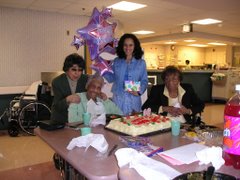
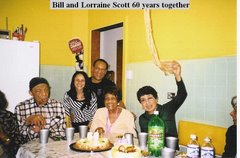
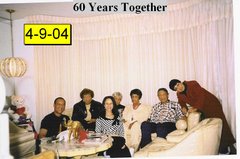
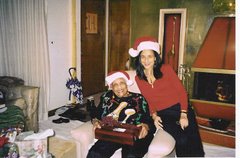
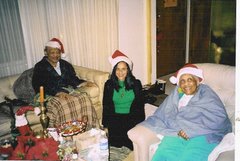
.jpg)